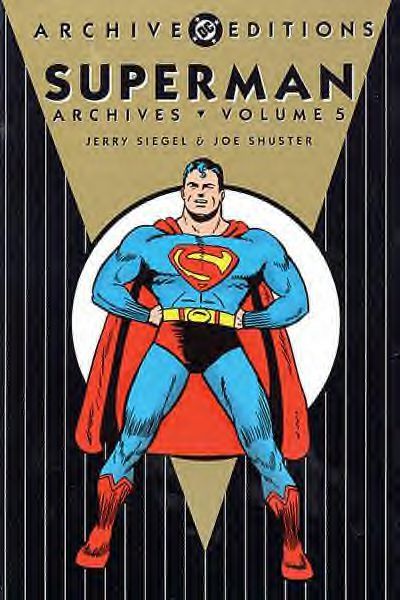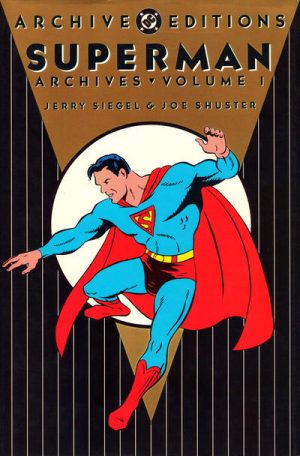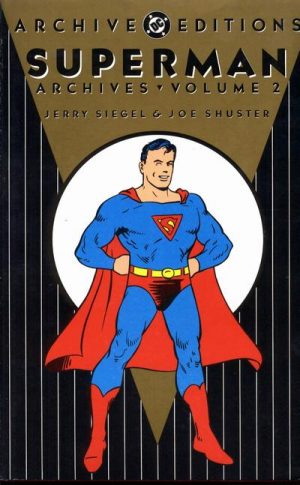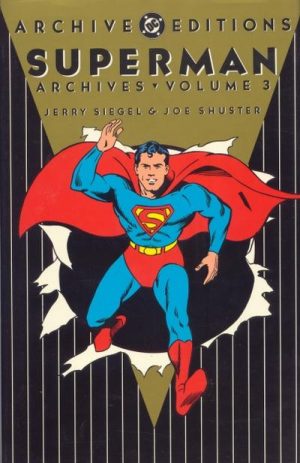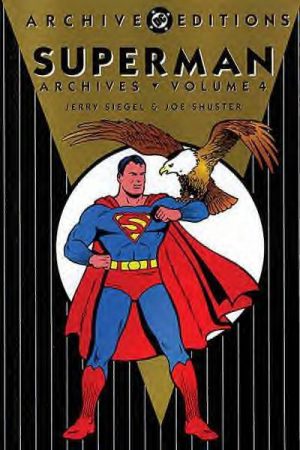Review by Frank Plowright
The Superman Archives series brings home how different comics once were. 72 pages was the standard format for a comic in 1942 and 1943, and Superman’s own comic mainly ran stories about Superman, unlike Action Comics, where he was the headliner, but the escapades of other characters also featured. It means this series continues to reprint only four issues per hardcover volume, but still runs over two hundred pages once cover reproductions and then Superman editor Mike Carlin’s introduction are factored in.
As of 1942 Jerry Siegel still writes all Superman stories, but once he’d founded a studio for the large amounts of Superman art DC required, Joe Shuster stopped drawing the comics, reserving himself for the newspaper strip, which at the time was considered to have greater prestige. While his name still appears in the credits, most of the art here is by Leo Nowak and the more dynamic John Sikela, who’s pushing the boundaries of what was considered standard by including decorative panels occupying a third, and sometimes half a page.
Shuster seems to have kept himself back for what might now be considered special tales, although that’s chance as the special nature is applied in hindsight. The opener is the first story centred entirely on the topic of Lois Lane suspecting Clark Kent is Superman. There has been passing speculation, but here she goes all out to prove it, requiring some tricky thinking on Clark’s part. Such stories would become silly, but this still has an air of realism. Shuster’s next outing is silly, though, self-aggrandizing and short on logic, as Clark attempts to prevent Lois watching the Superman cartoons at the cinema lest she discover his true identity. That’s not an issue in Shuster’s final contribution where Siegel returns the Puzzler, although truth be told he could be replaced by any nondescript villain.
There’s a second story about Superman’s secret identity, this one cleverly set up when what’s intended as a private joke goes viral and Clark must pretend to be Superman. Other notable outings include the return of Lex Luthor and his Powerstone, the first appearance of a costumed villain in ‘The Snake’, and Superman constructing himself a secret citadel in the mountains, shown on Sikela’s sample art.
Siegel generally steered clear of having Superman involved in the then ongoing World War II, but two stories touch on it. The first has Clark concerned about complacency in Metropolis, so going along with a plan for a faked Nazi invasion, while the second is far more specific, actually featuring a caricatured Adolf Hitler having a giant sea monsters attack an American coastal town. It’s daft, and might have looked better with more imagination from artist Ed Dobrotka.
There’s a fair variety of mood here, so allow for the stories being of their time, and there’s a lot of entertainment also. Everything here can also be found in the third Superman Golden Age Omnibus. Three-quarters of the content is also found in Superman: The Golden Age Volume Five paperback, or alternatively spread over Superman Chronicles Volume Nine and Volume Ten.
